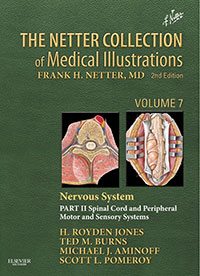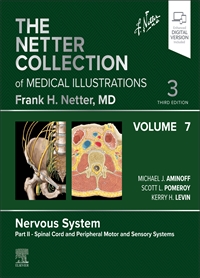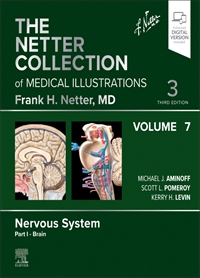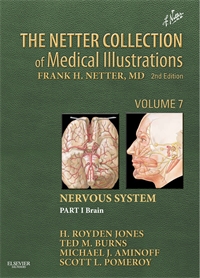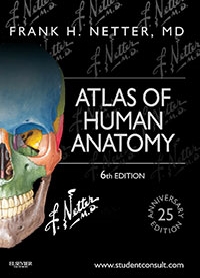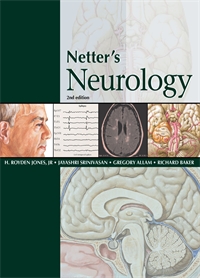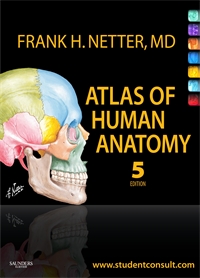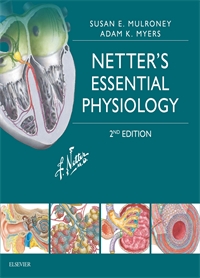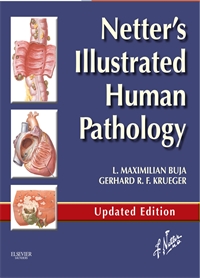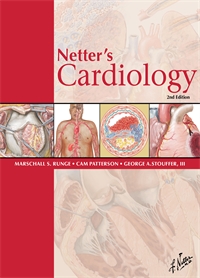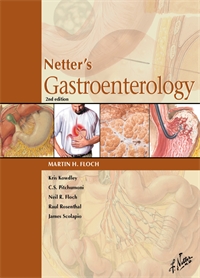Collection of Medical Illustrations, Nervous System Part II - Volume 7 - 2E
2nd Edition
Author: H. Royden Jones, Ted M. Burns, Michael J. Aminoff, Scott L. Pomerory
ISBN: 9781416063865
- Page 2: Distribution of Motor and Sensory Fibers
- Page 4: Nerves and Nuclei Viewed in Phantom from Behind
- Page 5: Nerves and Nuclei in Lateral Dissection
- Page 6: Olfactory Pathways
- Page 7: Olfactory Receptors
- Page 8: Olfactory Bulb and Nerve
- Page 9: Eye
- Page 10: Visual Pathways
- Page 11: Optic Nerve Appearance
- Page 12: Retinal Projections to Thalamus, Midbrain, and Brainstem
- Page 13: Pupillary Light Reflex and the Accommodation Reflex
- Page 14: Oculomoter (III), Trochlear (IV), and Abducens (VI) Nerves
- Page 15: Nerves of Orbit and Cavernous Sinus
- Page 16: Control of Eye Movements
- Page 17: Pupillary Light Reflex and the Accommodation Reflex
- Page 18: Control of Eye MovementsАathology (Continued)
- Page 19: Autonomic Innervation of the Eye
- Page 20: Trigeminal (V) Nerve
- Page 21: Trigeminal Nuclei: Afferent and Central Connections
- Page 22: Trigeminal Nuclei: Central and Peripheral Connections
- Page 23: Ophthalmic (VI) and Maxillary (V2) Nerves
- Page 24: Mandibular Nerve (V3)
- Page 25: Trigeminal Nerve Disorders
- Page 26: Facial (VII) Nerve
- Page 27: Muscles of Facial Expression: Lateral View
- Page 28: Central Versus Peripheral Facial Paralysis
- Page 29: Facial Palsy
- Page 30: Anatomy of Taste Buds and Their Receptors
- Page 31: Tongue
- Page 32: Vestibulocochlear (VIII) Nerve
- Page 33: Pathway of Sound Reception
- Page 34: Pathologic Causes of Vertigo
- Page 35: Canalith Repositioning (Epley Maneuver)
- Page 36: Afferent Auditory Pathways
- Page 37: Centrifugal Auditory Pathways
- Page 38: Vestibular Receptors
- Page 39: Cochlear Receptors
- Page 40: Glossopharyngeal (IX) Nerve
- Page 41: Otic Ganglion
- Page 42: Vagus (X) Nerve
- Page 43: Vagus Nerve Branches and Disorders
- Page 44: Accessory (XI) Nerve
- Page 45: Clinical Findings in Cranial Nerve XI Damage
- Page 46: Hypoglossal (XII) Nerve
- Page 47: Intramedullary Course
- Page 48: Disorders of Hypoglossal Nucleus and Nerve
- Page 50: Spinal Cord
- Page 51: Spinal Membranes and Nerve Roots
- Page 52: Arteries of Spinal Cord
- Page 53: Arteries of Spinal Cord: Intrinsic Distribution
- Page 54: Veins of Spinal Cord, Nerve Roots, and Vertebrae
- Page 55: Principal Fiber Tracts of Spinal Cord
- Page 56: Somesthetic System of Body
- Page 57: Corticospinal (Pyramidal) System: Motor Component
- Page 58: Rubrospinal Tract
- Page 59: Vestibulospinal Tracts
- Page 60: Reticulospinal and Corticoreticular Pathways
- Page 61: Spinal Origin or Termination of Major Descending Tracts and Ascending Pathways
- Page 62: Cytoarchitecture of Spinal Cord Gray Matter
- Page 63: Spinal Effector Mechanisms
- Page 64: Spinal Reflex Pathways
- Page 65: Motor Impairment Related to Level of Spinal Cord Injury
- Page 66: Sensory Impairment Related to Level of Spinal Cord Injury
- Page 67: Incompleete Spinal Cord Syndromes
- Page 68: Acute Spinal Cord Syndromes: Evolution of Symptoms
- Page 69: Acute Spinal Cord Syndromes: Pathology, Etiology, and Diagnosis
- Page 70: Spinal Tumors
- Page 71: Spinal Tumors (Continued)
- Page 72: Neuroimaging (MRI) Characteristics of Spinal Tumors
- Page 73: Syringomyelia
- Page 74: Subacute Combined Degeneration
- Page 75: Spinal Dural Fistulas and Areriovenous Malformations
- Page 76: Cervical Spondylosis
- Page 77: Cervical Disk Herniation Causing Cord Compression
- Page 78: Infectious and Hereditary Myelopathies
- Page 80: Spinal Column
- Page 81: Atlas and Axis
- Page 82: Cervical Vertebrae
- Page 83: External Craniocervical Ligaments
- Page 84: Internal Craniocervical Ligaments
- Page 85: Thoracic Vertebrae
- Page 86: Lumbar Vertebrae and Intervertebral Disk
- Page 87: Ligaments of Spinal Column
- Page 88: Sacrum and Coccyx
- Page 89: Distractive Flexion
- Page 90: Cervical Spine Injury: Prehospital, Emergency Room, and Acute Management
- Page 91: Compressive Flexion
- Page 92: Distractive Extension
- Page 93: Cervical Spine Injury: Prehospital, Emergency Room, and Acute Management
- Page 94: Traction and Bracing
- Page 95: Anterior Cervical Spine Decompression and Stabilization
- Page 96: Posterior Cervical Stabilization and Fusion
- Page 97: Spinal Cord Injury Medical Issues
- Page 100: Cervical Disk Herniation
- Page 101: Radiographic Diagnosis of Radiculopathy
- Page 102: Examination of Patient with Low Back Pain
- Page 103: Lumbar Disk Herniation: Clinical Manifestations
- Page 104: L4-5 Disk Extrusion
- Page 105: Lumbosacral Spinal Stenosis
- Page 106: Spinal Nerves
- Page 107: Dermal Segmentation
- Page 108: Thoracic Spinal Nerve Root
- Page 109: Thoracic Spinal Nerve Root Disorders
- Page 110: Diabetic Lumbosacral Radiculoplexus Neuropathy
- Page 111: Lumbar, Sacral, and Coccygeal Plexuses
- Page 112: Brachial Plexus
- Page 113: Brachial Plexus and/or Cervical Nerve Root Injuries at Birth
- Page 114: Brachial Plexopathy
- Page 115: Lumbosacral Plexopathy
- Page 116: Cervical Plexus
- Page 118: Compression Neuropathies
- Page 119: Chronic Nerve Compression
- Page 120: Electrodiagnostic Studies in Compression Neuropathy
- Page 121: Radiologic Studies in Compression Neuropathy
- Page 122: Proximal Nerves of the Upper Extremity: Spinal Accessory Nerve
- Page 123: Proximal Nerves of the Upper Extremity: Suprascapular and Musculocutaneous Nerves
- Page 124: Median Nerve
- Page 125: Proximal Median Neuropathies
- Page 126: Distal Median Nerve
- Page 127: Distal Median Neuropathies: Carpal Tunnel Syndrome
- Page 128: Proximal Ulnar Nerve
- Page 129: Ulnar Mononeuropathies: Potential Entrapment Sites
- Page 130: Radial Nerve
- Page 131: Radial Nerve Compression/Entrapment Neuropathies
- Page 132: Femoral and Lateral Femoral Cutaneous Nerves
- Page 133: Iliohypogastric, Ilioinguinal, Genitofemoral, and Obturator Nerves
- Page 134: Gluteal Nerves
- Page 135: Sciatic and Posterior Femoral Cutaneous Nerves
- Page 136: Fibular (Peroneal) Nerve
- Page 137: Tibial Nerve
- Page 138: Cutaneous Innervation
- Page 139: Dermatomes
- Page 143: Anatomy of Peripheral Nerve
- Page 144: Histology of Peripheral Nerve
- Page 145: Cell Types of Nervous System
- Page 146: Resting Membrane Potential
- Page 147: Ion Channel Mechanics and Action Potential Generation
- Page 148: Neurophysiology and Peripheral Nerve Demyelination
- Page 149: Impulse Propagation
- Page 150: Conduction Velocity
- Page 151: Visceral Efferent Endings
- Page 152: Cutaneous Receptors
- Page 153: Pacinian Corpuscle
- Page 154: Muscle and Joint Receptors
- Page 155: Proprioceptive Reflex Control of Muscle Tension
- Page 156: Hereditary Motor and Sensory Neuropathies (HMSN, i.e., Charcot-Marie-Tooth Disease)
- Page 157: Hereditary Motor and Sensory Neuropathy Types I and II
- Page 158: Other Hereditary Motor and Sensory Neuropathies (Types III, IV, and X)
- Page 159: Hereditary Sensory and Autonomic Neuropathy
- Page 160: Guillain-Barr Syndrome
- Page 161: Guillain-Barr Syndrome (Continued)
- Page 162: Chronic Inflammatory Demyelinating Polyradiculoneuropathy
- Page 163: Diabetic Neuropathies
- Page 164: Monoclonal Proteinρssociated Neuropathies: Amyloid Neuropathy
- Page 165: Monoclonal Proteinρssociated Neuropathies: Distal Acquired Demyelinating Symmetric (DADS) Neuropathy
- Page 166: Vasculitic Neuropathy and Other Connective Tissue Disorders Associated with Neuropathy: Fibrinoid Necrosis
- Page 167: Vasculitic Neuropathy and Other Connective Tissue Disorders Associated with Neuropathy: Fibrinoid Necrosis
- Page 168: Immunopathogenesis of Guillain-Barr Syndrome
- Page 169: Peripheral Neuropathy Cause by Heavy Metal Poisoning
- Page 170: Metabolic, Toxic, and Nutritional Peripheral Neuropathies
- Page 171: Leprosy and Other Infections Sometimes Causing Peripheral Neuropathies
- Page 174: General Topography of Autonomic Nervous System
- Page 175: General Topography of Autonomic Nervous System (Continued)
- Page 176: Autonomic Reflex Pathways
- Page 177: Cholinergic and Adrenergic Nerves
- Page 178: Autonomic Nerves in Head
- Page 179: Autonomic Nerves in Neck
- Page 180: Autonomic Distribution to the Head and the Neck
- Page 181: Ciliary Ganglion
- Page 182: Thoracic Sympathetic Chain and Splanchnic Nerves
- Page 183: Innervation of Heart
- Page 184: Innervation of Blood Vessels
- Page 185: Carotid Body and Carotid Sinus
- Page 186: Autonomic Nerves and Ganglia in Abdomen
- Page 187: Innervation of Stomach and Proximal Duodenum
- Page 188: Innervation of Intestines
- Page 189: Autonomic Innervation of Small Intestine
- Page 190: Enteric Plexuses
- Page 191: Innervation of Liver and Biliary Tract
- Page 192: Innervation of Adrenal Glands
- Page 193: Autonomic Nerves and Ganglia in Pelvis
- Page 194: Autonomic Innervation of Kidneys and Upper Uterus
- Page 195: Innervation of Urinary Bladder and Lower Ureter
- Page 196: Innervation of Male Reproductive Organs
- Page 197: Innervation of Female Reproductive Organs
- Page 198: Autonomic Testing
- Page 199: Abnormal Pupillary Conditions
- Page 200: Clinical Presentation of Autonomic Disorders
- Page 202: Somatosensory System
- Page 203: Somatosensory Afferents and Principal Fiber Tracts
- Page 204: Pain Pathways
- Page 205: Endorphin System
- Page 206: Spinothalamic and Spinoreticular Nociceptive Processing in the Spinal Cord
- Page 207: Central Nervous System Neurotransmitters, Receptors, and Drug Targets
- Page 208: Thalamic Pain Syndrome
- Page 209: Clinical Manifestations Related to Thalamus Site in Intracerebral Hemorrhage
- Page 210: Complex Regional Pain
- Page 211: Herpes Zoster
- Page 212: Occipital Neuralgia
- Page 213: Myofascial Factors in Low Back Pain
- Page 214: Myofascial Factors in Low Back Pain (Continued): Posterior Abdominal Wall: Internal View
- Page 215: Lumbar Zygapophyseal Joint Back Pain
- Page 216: Low Back Pain and Effects of Lumbar Hyperlordosis and Flexion on Spinal Nerves
- Page 217: Examination of the Low Back Pain Patient
- Page 218: Osteoporosis
- Page 219: Diagnosis of Hip, Buttock, and Back Pain
- Page 220: Hip Joint Involvement in Osteoarthritis
- Page 221: Peripheral Nerves of Feet, Painful Peripheral Neuropathies
- Page 222: Peripheral Neuropathies: Clinical Manifestations
- Page 223: Neurologic Evaluation of the Somatoform Patient: Cutaneous Distribution of Peripheral Nerves
- Page 224: Neurologic Evaluation of the Somatoform Patient: Somatoform Conversion Reactions
- Page 226: Neonatal Hypotonia
- Page 227: Spinal Muscular Atrophy Type I (Werdnig-Hoffmann Disease)
- Page 228: Infantile Neuromuscular Junction (NMJ) Disorders
- Page 229: Congenital Myopathies
- Page 230: Arthrogryposis Multiplex Congenita
- Page 232: Peripheral Nervous System: Overview
- Page 233: Spinal Cord and Neuronal Cell Body with Motor, Sensory, and Autonomic Components of the Peripheral Nerve
- Page 234: Motor Unit
- Page 235: Motor Unit Potentials
- Page 236: Primary Motor Neuron Disease
- Page 237: Clinical Manifestations of Amyotrophic Lateral Sclerosis
- Page 238: Clinical Manifestations of Amyotrophic Lateral Sclerosis (Continued)
- Page 239: Mimics of Amyotrophic Lateral Sclerosis
- Page 240: Diagnosis of Amyotrophic Lateral Sclerosis
- Page 241: Treatment of Amyotrophic Lateral Sclerosis
- Page 242: Spinal Muscular Atrophy and Spinal Bulbar Muscular Atrophy
- Page 244: Structure of Neuromuscular Junction
- Page 245: Physiology of Neuromuscular Junction
- Page 246: Somatic Neuromuscular Transmission
- Page 247: Pharmacology of Neuromuscular Transmission
- Page 248: Repetitive Motor Nerve Stimulation
- Page 249: Myasthenia Gravis: Clinical Manifestations
- Page 250: Myasthenia Gravis: Etiological and Pathophysiologic Concepts
- Page 251: Immunopathology of Myasthenia Gravis
- Page 252: Presynaptic Neuromuscular Junction Transmission Disorders: Lambert-Eaton Myasthenic Syndrome and Infantile Botulism
- Page 253: Congenital Myasthenic Syndromes
- Page 254: Foodborne Neurotoxins
- Page 256: Muscle Fiber Anatomy: Basic Sarcomere Subdivisions
- Page 257: Muscle Fiber Anatomy: Biochemical Mechanics of Contraction
- Page 258: Muscle Membrane, T Tubules, and Sarcoplasmic Reticulum
- Page 259: Muscle Response to Nerve Stimulation
- Page 260: Metabolism of Muscle Cell
- Page 261: Muscle Fiber Types
- Page 262: Overview of Myopathies: Clinical Approach
- Page 264: Dystrophinopathies: Duchenne Muscular Dystrophy--Gower's Maneuver
- Page 265: Dystrophinopathies: Duchenne Muscular Dystrophy
- Page 266: Dystrophinopathies: Molecular Genetic Testing
- Page 267: Myotonic Dystrophy and Other Myotonic Disorders
- Page 268: Myotonic Dystrophy and Other Myotonic Disorders (Continued)
- Page 269: Other Types of Muscular Dystrophy
- Page 270: Polymyositis and Dermatomyositis
- Page 271: Polymyositis and Dermatomyositis (Continued)
- Page 272: Inclusion Body Myositis
- Page 273: Immunopathology for Inflammatory Myopathies
- Page 274: Endocrine, Toxic, and Critical Illness Myopathies
- Page 275: Myopathies: Hypokalemia/Hyperkalemia and the Periodic Paralyses Channelopathies Myopathies Associated with Disorders of Potassium Metabolism
- Page 276: Metabolic and Mitochondrial Myopathies
- Page 277: Myoglobinuric Syndromes Including Malignant Hyperthermia
